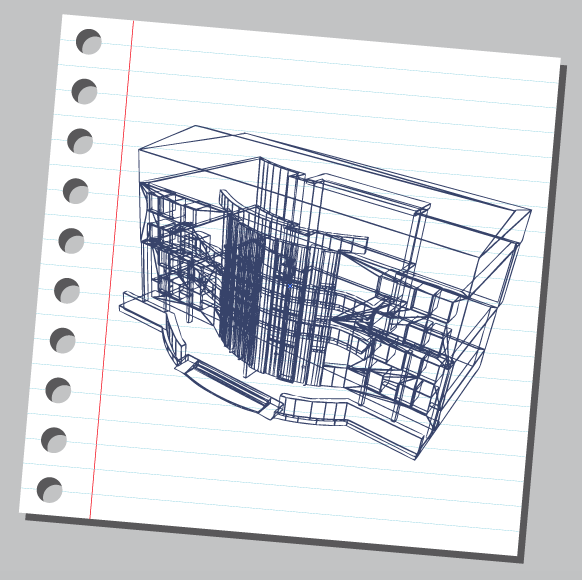 Drones, laser scanning, smart work boots, 4D scheduling, live construction drawings—they’re the types of new technologies construction firms are often skeptical of. But is it possible they hold the answer to the industry’s labor crisis?
Drones, laser scanning, smart work boots, 4D scheduling, live construction drawings—they’re the types of new technologies construction firms are often skeptical of. But is it possible they hold the answer to the industry’s labor crisis?
With 60 percent of the construction workforce set to retire in the next five years and eight in 10 firms already struggling to find skilled labor, there’s no end in sight to the labor shortage that’s preventing home builders from meeting the skyrocketing demand for new homes. More than 63 percent of builders cite labor as their biggest worry. Who, they wonder, is going to take up the hammer in place of the retiring legions?
Not millennials, it seems. Three in four young adults say they already know what field they want to work in, and it’s not home building—just 3 percent name construction as their career of choice. Why? They’re digital natives who want jobs that make use of their technological prowess, and they don’t see construction as an innovative or cutting-edge field.
“Millennials are never without their smart phones and many see the value and convenience of incorporating mobile tools into their workflow,” says Jeff Weiss, Executive Vice President of Global Sales at CMiC, a software provider for the construction industry. “But in construction, job sites have been slow to adopt mobile technology.”
In fact, construction lags behind nearly every other industry in terms of technology adoption, investing less than 1 percent of its revenue in research and development. It’s one of the least digitized sectors in the world, second only to agriculture and hunting in the United States.
To attract and retain millennial talent, home builders will need to turn that image around. The good news is, there’s plenty of productivity-boosting technology available to help them do it.
“The best way to recruit millennials is to show that your construction company is forward-thinking and innovative,” Weiss says. “To do that, construction firms need to embrace technology.”
Millennials and workplace tech
Today’s young adults have been prepared for a world that demands their digital acumen, and they’ve come to equate a job’s desirability with the level of technology skills involved.
Roughly two in three of the jobs created since 2010 have required at least medium-level digital skills, while 30 percent required highly digital skills. By 2016, 71 percent of jobs were demanding moderate technology prowess, at a minimum. Technology-oriented jobs tend to be higher paying, with a $72,896 mean annual wage for highly digital occupations compared to $30,393 for low-level digital jobs.
But it’s not just about the money. Millennials are profoundly aware of how technology helps them be more efficient and effective in their personal lives, and they want that on the job, too. Three in five millennials say state-of-the art technology is important to them when considering a job, and 78 percent say they’re more effective at work when they have access to technology they like to use.
“Technology has become completely unified into the everyday life of millennials,” says Forbes contributor Jeff York, chief sales officer for the payroll technology provider Paycom. “They no longer ask for sufficient technology at their jobs; they expect it. Often, this expectancy has been painted as entitlement, but what millennial workers really want are the tools they need to do their job efficiently.”
Construction going digital
Although adoption has been slow, digital tools are starting to show up at more and more job sites. In fact, several technologies are making waves among some of the nation’s more cutting-edge builders.
Mobile apps designed to leverage construction workers’ smart phone capabilities on the job are allowing employees to effortlessly receive updated blueprints and plans, snap and share pictures of problem areas, manage change orders, track time and materials, and exchange information with the home office. Innovations from drones to laser scanning are shaving hours of manual labor off tasks such as land surveying, site inspections and productivity monitoring. Wearable technologies are helping employees stay safe and work more efficiently onsite.
Digitalization on the job site isn’t just good for millennials—it’s good for builders and their home buyers too.. Home builders who are able to overcome the industry’s conventional aversion to technology could see significant gains in efficiency, productivity and even sales.
According to research by McKinsey, more frequent use of digital tools in construction could boost productivity by up to 60 percent and generate $1.6 trillion in value. That would be a huge boon to contractors, given that the industry’s labor-productivity growth has averaged just 1 percent a year over the past two decades, compared to the total world economy’s 2.8 percent.
Even the simplest digital tools can help home builders save time while engaging employees as well as buyers across all aspects of their business. Resources like PWSC’s HomeOwner Platform (HOP) exist to help builders connect with current homeowners and provide a one-stop shop for everything home and even life-related. The more builders are able to harness technology to make work easier, the more likely they’ll be to attract millennials to the trade and buyers to the closing table.

Builder's Warranty
5 Steps to Better Risk Management for Builders
Just as important as building quality homes is knowing how to protect them—and the rest of your business assets—along the way. Liabilities are everywhere. Effectively



